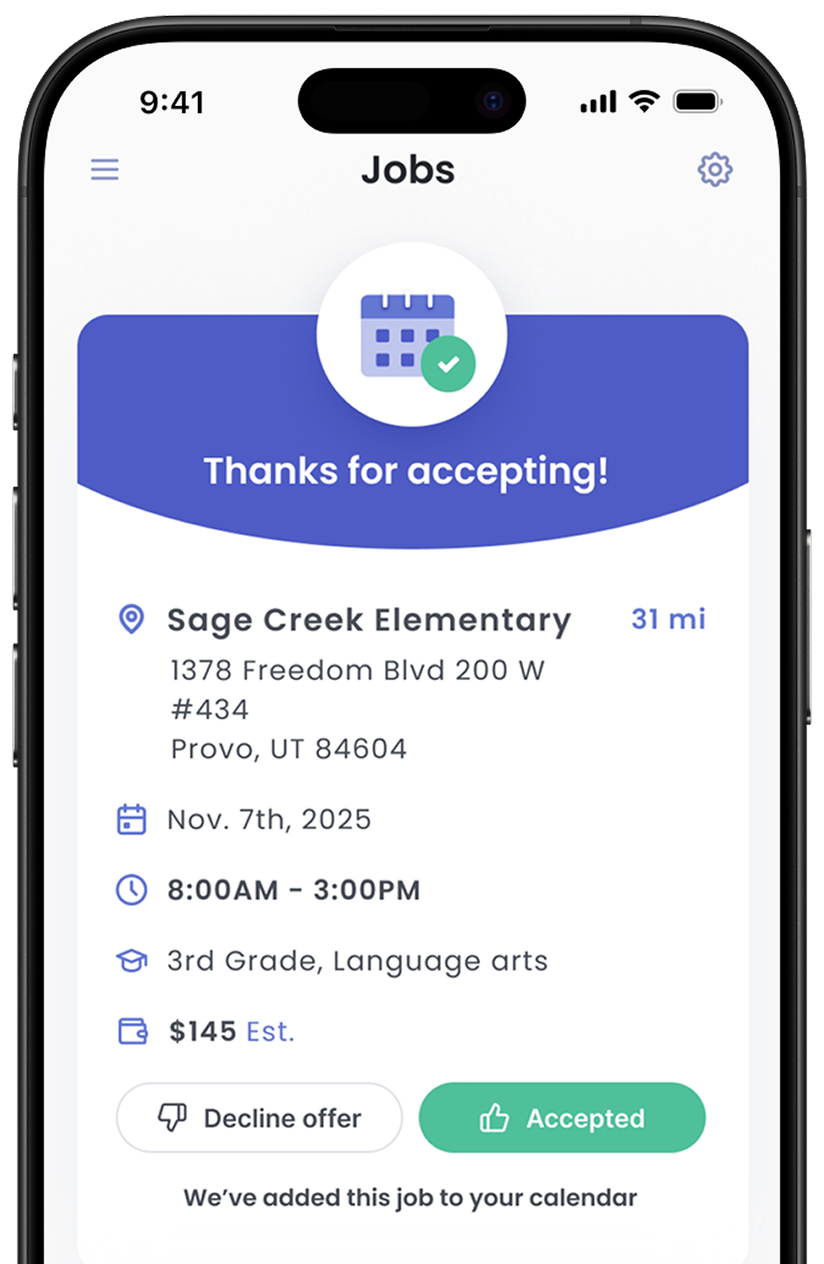Importance of Engagement
Substitute teaching is not at all like the stereotype on TV, where subs sit at the teacher desk reading a book or scrolling on their phones while students keep busy with a packet of work. Substitute teaching requires active engagement with presenting lesson material, managing classroom behaviors, and supporting students with their assignments.
It may feel awkward to have a lot of interaction with students, especially when it is the first time you have subbed for a class. You might wonder how much help is appropriate to give to students. You might think that older students don't want to talk to a substitute or that they can take care of themselves. Unless you are administering a test, the reality is that there should be a high level of interaction––students thrive on their teacher's energy and level of engagement. That includes substitute teachers! Even if the lesson calls for independent work, and even if the lesson calls for students to keep quiet, you can still find ways to (quietly) interact with students throughout class to support their needs.
Below are some ideas that you can use to boost your interaction with students.
Review plans ahead if possible.
Teachers don't always have sub plans posted ahead on the Senya platform, but you can check by going to the job details to see if the teacher has uploaded a file. Sometimes these files are uploaded a day or two before. If not, consider arriving early so that you aren't rushed as you read through the plans.
When you look at the plans and any assignments that you will be passing out, check for topics, skills, and reading passages that students will be doing. Looking ahead when possible will allow you to brush up on your own understanding of those topics and skills––such as a particular type of math that you haven't done in a while! You aren't expected to be an expert, but it makes a huge difference when you can answer more questions and give more support than if you hadn't studied ahead.
Share an appropriate, fun, BRIEF introduction of yourself to start class.
Students want to know who you are! In addition to sharing your last name (most schools appreciate you using Mr., Ms., or Mrs. and last name), come prepared with just a few interesting, school appropriate things you can share about yourself, such as hobbies and favorite things. If you are unsure whether or not something is school appropriate, choose something you are absolutely certain is appropriate.
It is recommended that you do not take questions from students. Sharing just a few brief things about yourself will be enough to break the ice and make students feel comfortable for your later interactions throughout class time.
Invite students to share thinking during lessons.
If the lesson plan allows, invite students to ask questions and share their thinking during lessons. This interaction is important for you to track students' understanding and to review things that need more explanation. It also shows that you value their ideas and are interested in what they are learning.
Be careful not to have students share out the answers to questions or problems on the assignment (unless directed by the teacher in the sub plans). Whole-class interactions should be focused on whatever the teacher asked you to share, and then your interactions will move to talking with students in groups or individually as they work on their assignment.
Circulate the room and check in with students.
One of the most simple but vital things you can do to boost your interactions is to circulate the room while students are working. You may already have this habit for behavior management reasons (students are way less likely to misbehave with an attentive, roaming teacher), but you can mix in pauses where you check in with students and offer support.
Remember that the focus of your interactions should stay grounded in the lesson and classwork. Students like to chat and may try to have more casual conversations with you; politely keep attention on classwork.
Praise work and encourage students to keep going.
Another thing you can do while circulating the room is praise students for the work they are accomplishing and give encouragement to students who are struggling or need to refocus. Keeping students motivated can feel exhausting after a while, but some students need the extra prompts throughout class.
The difference between a substitute who has students complete all their work versus one whose students don't get much done often comes down to the level of persistence in giving students encouragement. When students see that a substitute teacher (or any staff member) won't check on them or has given up, they may not put in the effort to finish their work. On the other hand, students will respond to the tone and energy of a positive, active substitute!
.png)




